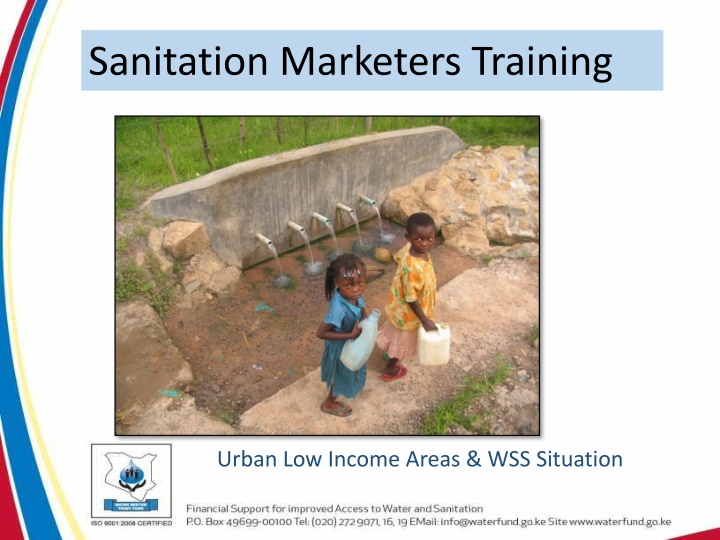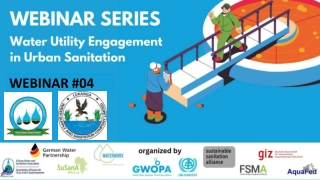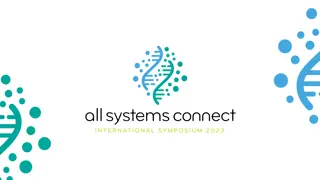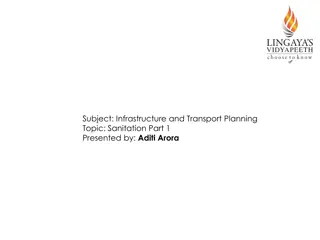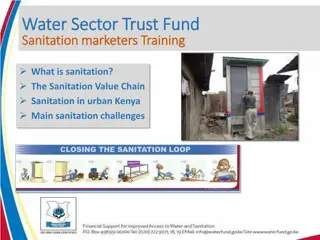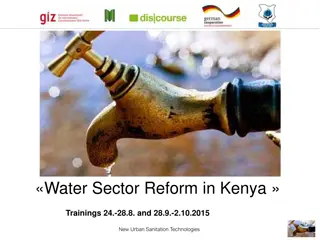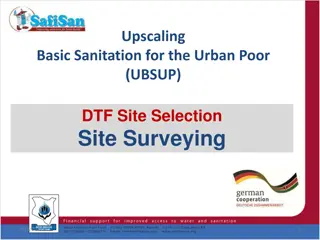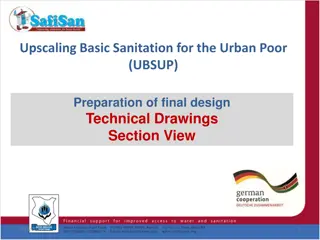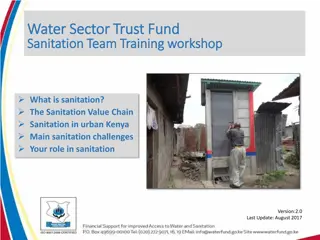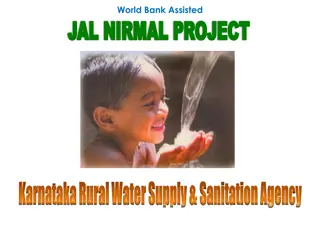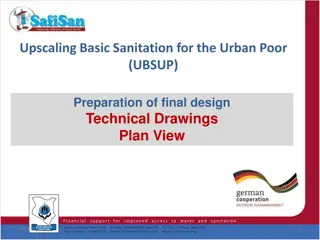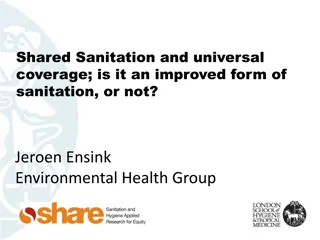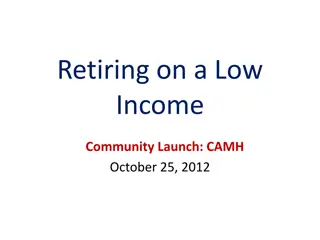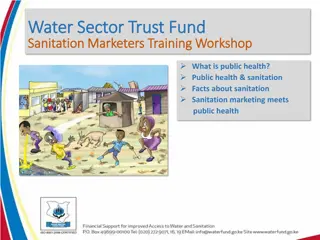Target Areas for Sanitation Marketers Training in Urban Low-Income Areas
Target areas for sanitation marketers training in urban low-income areas include informal settlements, planned urban areas with low-income housing, informal housing in planned residential areas, urban IDP settlements, and urban sub-centers. These areas present challenges with water supply and sanitation systems, high population densities, and poor living conditions, making them crucial for intervention and improvement initiatives.
Download Presentation

Please find below an Image/Link to download the presentation.
The content on the website is provided AS IS for your information and personal use only. It may not be sold, licensed, or shared on other websites without obtaining consent from the author.If you encounter any issues during the download, it is possible that the publisher has removed the file from their server.
You are allowed to download the files provided on this website for personal or commercial use, subject to the condition that they are used lawfully. All files are the property of their respective owners.
The content on the website is provided AS IS for your information and personal use only. It may not be sold, licensed, or shared on other websites without obtaining consent from the author.
E N D
Presentation Transcript
Sanitation Marketers Training Urban Low Income Areas & WSS Situation
What are the What are the target areas 1. Informal urban settlements Informal settlements are often referred to as urbanslums Residents often depend on a small number of house/yard connections, springs and wells In other areas residents use water kiosks or rely on the services of water resellers Households residing on the same plot share pit latrines and in slums (such as Kibera in Nairobi) some residents resort to flying toilets target areas of the UBSUP/SafiSan Programme? of the UBSUP/SafiSan Programme?
2. Target areas: Planned urban areas with planned low income 2. Target areas: Planned urban areas with planned low income housing housing Planned low income housing areas or estates with high population densities, dilapidated water supply and sanitation systems (e.g. Council and Government housing areas)
3. Target Areas: Informal housing in planned residential areas 3. Target Areas: Informal housing in planned residential areas Informal housing in planned urban areas where plot owners have title deeds Sometimes plots with informal housing constitute small pockets which are surrounded by well constructed homes or commercial properties Flats in Kitale >>
4. Target Areas: Urban IDP settlements 4. Target Areas: Urban IDP settlements In some towns such as Kitale, there are a number of well established IDP settlements These settlements are characterised by high population densities and informal housing (houses and huts constructed with branches, plastics and other available materials) Income levels in these settlements are usually very low and the WSS situation is often poor
5. Target areas: Urban sub 5. Target areas: Urban sub- -centres centres An urban sub-centre can be described as a relatively small urban centre, which is often situated at some distance from the nearest main town Bukembe near Bungoma >>
6. Target areas: Large rural centres with urban characteristics 6. Target areas: Large rural centres with urban characteristics A large rural centre can be described as a large settlement located in a rural setting Population size and population density render rural water supply solutions (hand pumps, etc.) unsuitable
Habitation Patterns in Low Income Areas The WSTF and GIZ carried out a sanitation study in 11 cities and towns (+- 2,000 households were interviewed This UBSUP Preparatory Study shows: A large majority (63.9%) of all households in the low income areas studied are renting their accommodation
Habitation Patterns in Low Income Areas The study also shows that there are marked differences between the various cities and towns In Nakuru and Kiserian, approximately 90% of all households are renting their accommodation - Figures for Garissa and Isiolo are much lower; 14.3% and 28.6% respectively Approximately 37% of all plot owners are residing on the plot (resident landlord and landlady) while 35 % of the landlords or landladies are not residing on the plot
Sanitation in Low Income Areas Landlords & landladies play an important role in decision making with regard to sanitation
Sanitation Situation in Low Income Areas Low income areas: The traditional pit latrine is the most common toilet, followed by the improved pit latrine Only 4% of the residents of all plots do not have a functioning toilet
Sanitation Situation in Low Income Areas (Contd) Most households must share the toilet they use with other households living on the same plot However, almost no households that have their own toilet share their toilet with others (e.g. other families residing on the same plot)
Sanitation Situation in Low Income Areas (Contd) 36.2% of Muslim households have their own toilet. This is significantly higher as compared to Christian households (15.4%) (Source: UBSUP Preparatory Study) This is understandable if one considers the emphasis placed by Muslims on: gender and privacy their preference for squatting instead of sitting (for hygienic reasons), the use of water for anal cleansing and their preference for pour-flush toilets
Thank you! Thank you!
